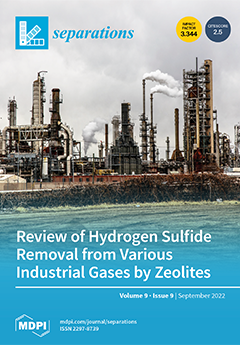Plants have a wide range of active compounds crucial in treating various diseases. Most people consume plants and herbals as an alternative medicine to improve their health and abilities.
A. angustiloba extract showed antinematodal activity against
Bursaphelenchus xylophilus, antitrypanosomal action against
Trypanosoma
[...] Read more.
Plants have a wide range of active compounds crucial in treating various diseases. Most people consume plants and herbals as an alternative medicine to improve their health and abilities.
A. angustiloba extract showed antinematodal activity against
Bursaphelenchus xylophilus, antitrypanosomal action against
Trypanosoma brucei and anti-plasmodial activity against the chloroquine-resistant
Plasmodium falciparum K1 strain. Moreover, it has demonstrated growth inhibitory properties towards several human cancer cell lines, such as MDA-MB-231, SKOV-3, HeLa, KB cells and A431. DPPH and ABTS assays were carried out to determine the antioxidant activity of the aqueous and 60% methanolic extract of
A. angustiloba leaves. Moreover, total phenolic and flavonoid contents were quantified. The presence of potential active compounds was then screened using liquid chromatography coupled with a Q-TOF mass spectrometer (LC–MS) equipped with a dual electrospray ionisation (ESI) source. The EC
50 values measured by DPPH for the 60% methanolic and aqueous extracts of
A. angustiloba leaves were 80.38 and 94.11 µg/mL, respectively, and for the ABTS assays were 85.80 and 115.43 µg/mL, respectively. The 60% methanolic extract exhibited the highest value of total phenolic and total flavonoid (382.53 ± 15.00 mg GAE/g and 23.45 ± 1.04 mg QE/g), while the aqueous extract had the least value (301.17 ± 3.49 mg GAE/g and 9.73 ± 1.76 mg QE/g). The LC–MS analysis revealed the presence of 103 and 140 compounds in the aqueous and 60% methanolic extract, respectively. It consists of phenolic acids, flavonoids, alkaloids, amino acids, glycosides, alkaloids, etc. It can be concluded that the therapeutic action of this plant is derived from the presence of various active compounds; however, further research is necessary to determine its efficacy in treating diseases.
Full article





